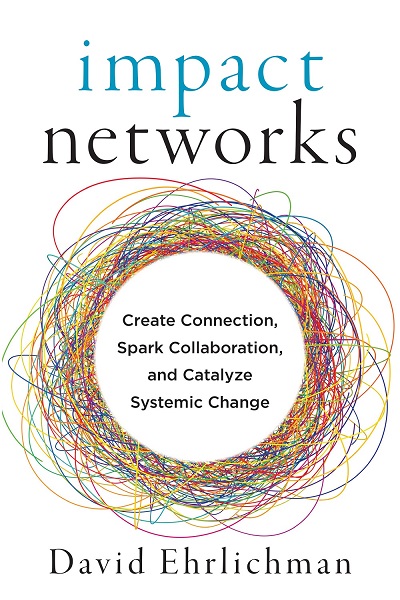The way I would summarize David Ehrlichman’s new book, Impact Networks: Create Connection, Spark Collaboration, and Catalyze Systemic Change, is that it concerns pragmatic empathy. Pragmatic in the sense that Mr. Ehrlichman’s articulation of what he calls an ‘Impact Network’ is a specific, principled set of approaches to bridge the gaps between opposing perspectives. While a prime corporate psychology tactic to utilize in the workplace, it’s something simultaneously effective to use in life – to bridge the divides between hearts, minds, perspectives, and political divides.
CONVERGE: https://www.converge.net/
Ehrlichman’s prowess as someone articulating this philosophy is making it formal and logical in its presentation, but still emotionally engaging – if by nothing else in the book than by the ends it can promote. “The first step when cultivating an impact network is clarifying if and why it should exist. Sometimes the need will be quite obvious, particularly for those who have been working in their field for years. Other times it may call for some investigation. In either case, it takes a special person or group of people to recognize the potential for a network and to invest the time and resources to help it form,” he says.
He goes on to state, “If there doesn’t seem to be much energy or interest, creating an impact network probably isn’t the right approach at this time. Still, even in the absence of an organized impact network, you can continue doing whatever you can to foster connection across the system. You can introduce people who are working on similar issues or create new communication channels where people can share information. Strengthening the underlying network of connections that exists within any human system is almost always a worthy exercise. In many cases, it is wise to start by strengthening connections informally, and gauging people’s interest to engage further, before spending additional resources to build a formal network.”
Through each part of the book, Ehrlichman shows the pros and cons of instituting an Impact Network framing, dividing the chapters into two distinctive sections – christened Working Through Networks and Cultivating Impact Networks. It’s interesting that there isn’t a third section of the book, talking formally about the solidification once a said Impact Network is institutionalized. Perhaps in part that’s because Ehrlichman states that in spite of statistically backed benefits, each iteration of an Impact Network is an individualized phenomenon. Something natively constructed on the ground that’s pertinent to and abides by a specific enterprise’s policies, rules, and own form of management. “When you bring people together in an impact network, you’re inviting them into co-creation—into the collective discovery of what the network is and what it can become.
BUY THE BOOK: https://www.amazon.com/dp/B08ZNVWZLH/ref=dp-kindle-redirect?_encoding=UTF8&btkr=1
Those who have been involved the longest are not in control: networks are not owned by anyone; they are shared by everyone. Established members and newcomers alike are free to self-organize to advance the network’s purpose in alignment with its principles,” Ehrlichman writes. “As new people contribute, new possibilities emerge. A network’s purpose and principles may be well defined by an initial group before new members arrive. This can be quite helpful—it gives people a sense of whether the network is something they’d like to contribute to, and it helps ensure that the network’s actions stay coherent as it grows. Then, purpose and principles are likely to be refined as new members join the conversation.”
Cyrus Rhodes



























